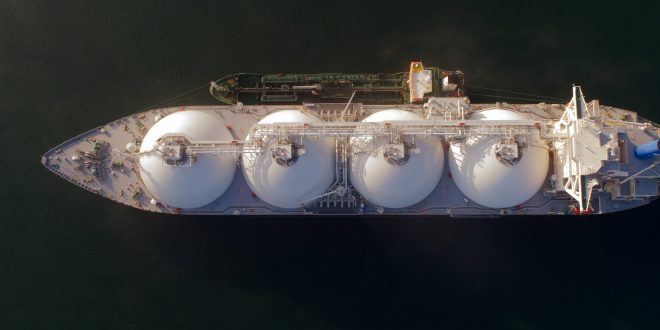A new wave of LNG importers borne out of China’s gas market reforms is the new growth opportunity in Asia’s LNG market, but their limited procurement capability and prompt demand requirements mean they are active only in the spot market.
This complicates the marketing strategy of large LNG producers like Qatar, which are mainly looking to sign long-term contracts, often with rigid terms and conditions such as a lack of destination flexibility, with established customers that have firm downstream demand.
For dozens of China’s new gas importers, incentivized by state-run China Oil & Gas Piping Network Corp. or PipeChina’s opening up of infrastructure access, visibility in procurement and downstream demand is much more short-term and spontaneous, often limited to a few months.
The scale of demand growth from these companies is significant, with PipeChina granting around 6.4 million mt of LNG terminal capacity for third-party users for 2021. This is equal to 9 Bcm of natural gas and nearly half of China’s annual LNG demand growth.
Chinese LNG imports are expected to rise by 21 Bcm or 23% year on year in 2021, before the growth rate eases slightly in subsequent years as economic growth slows and pipeline imports continue to pick up, said Szehwei Yeo, LNG analyst with S&P Global Platts Analytics.
China’s natural gas demand growth is expected to exceed 20-30 Bcm or 6%-9% annually, with total demand estimated to reach 420-500 Bcm in 2025, up from 326.2 Bcm in 2020, according to state-owned oil company CNPC’s Economics & Technology Research Institute.
Trading sources said a growing portion of China’s LNG demand growth is expected to be met by short-term or spot supplies in coming years, from entities that are not large national oil companies, while the long-term market lags.
As of mid-June, at least five Chinese companies, including state-run CNOOC, Unipec, ENN, Guangdong Energy and Beijing Gas, had bought a total of around 80-90 LNG cargoes in strip tenders for delivery up to March 2022, which is more than six times that in full-year 2020, traders said.
New entrants
In order to tap this short-term market, Qatar would have to diversify from long-term contracted volumes that have been the cornerstone of its market share strategy, similar to Saudi Aramco in the oil market.
Qatar’s gas exporters have recognized this and in recent years been more active in signing shorter contracts and bidding competitively in spot tenders, and planning to start their own gas trading desks. It remains to be seen if they can expand this foothold in the lucrative Chinese LNG spot market.
Catering to new market players that are not national oil companies like CNOOC or Sinopec comes with several risks and is not a new phenomenon. In LPG and crude oil markets, sellers deal with new importers with high demand growth but weak credit profiles and high counterparty risk, and who often renege on contracts or refuse to take deliveries in unfavorable conditions.
This has paved the way for big commodity traders like Trafigura, Vitol and Mercuria, or the trading arms of oil majors like BP and Shell, to make inroads either by assuming the role of intermediaries, tapping into local market expertise or simply being more nimble trading entities.
But Qatar would not want to lose LNG market share to traders, oil majors and portfolio players.
Long-term leverage
Outside of the new importers, Qatari LNG has leverage in the Chinese market on two fronts – it has set the lowest price at slopes of 10% Brent, and China is diversifying long-term supply from the US and Australia.
“Currently we may not consider signing long-term contracts for Australia-origin or US-origin LNG cargoes in order to avoid the risks of geopolitics and high supply proportion from a single country,” a trade source with one of China’s national oil companies told Platts.
Other trade sources confirmed that ongoing long-term LNG discussions do not include Australian and US volumes, and there is significant room for Qatar’s share of China’s gas supply to grow.
Australia was China’s single-largest LNG supplier in 2020 at 29 million mt, customs data showed. This accounted for 43% of China’s total LNG imports of 67 million mt and 37% of Australia’s total LNG exports of 78 million mt in the year.
China imported 8 million mt of LNG from Qatar in 2020, accounting for just 12% of its total LNG imports and 10% of Qatar’s total LNG exports of 77 million mt in 2020.
Australian LNG has benefited from shorter shipping distances and US cargoes are favored for more flexibility, but Chinese traders said Qatar’s low prices are hard to turn down.
China’s long-term LNG contract volume was estimated at around 56.5 million mt in 2020, accounting for 84% of its total LNG imports in the year, and the annual growth rate of China’s long-term LNG contract volume is expected to be around 3%-5% over 2021-2024, based on the contracts that have been signed to date, Platts calculations showed.

 Iran Energy News Oil, Gas, Petrochemical and Energy Field Specialized Channel
Iran Energy News Oil, Gas, Petrochemical and Energy Field Specialized Channel



